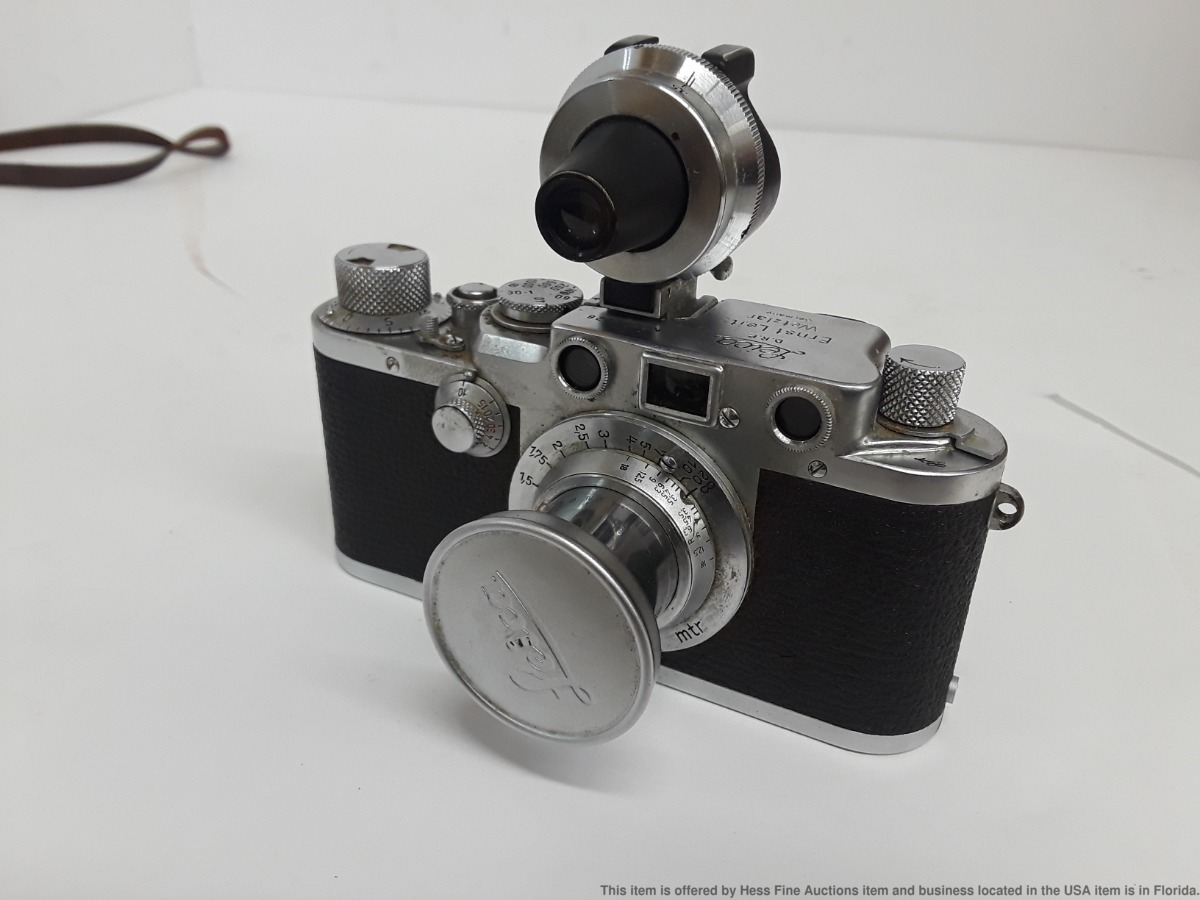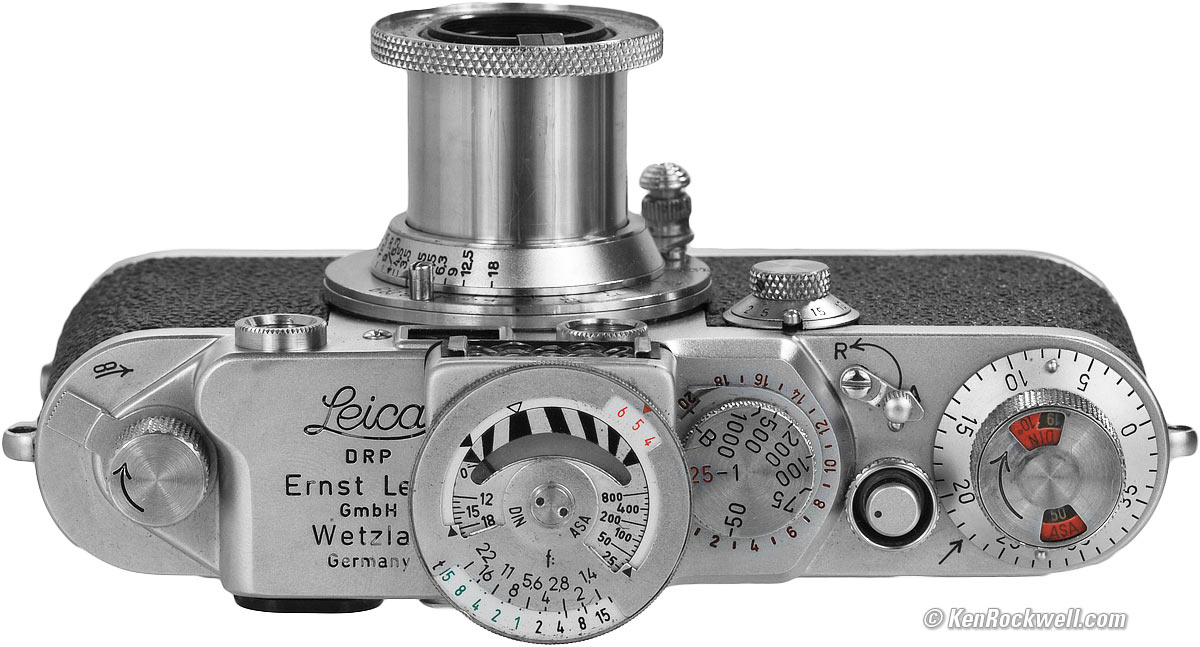
Leica IIIf fitted with a Summarit 50mm f/1.5 and a viewfinder. This particular model does not feature a self-timer. | |
| Overview | |
|---|---|
| Type | |
| Lens | |
| Lens mount | M39 lens mount |
| Focusing | |
| Focus | manual |
| Exposure/metering | |
| Exposure | manual |
| Flash | |
| Flash | cold shoe |
1933-34 Leica D.R.P. Ernst Leitz Wetzlar german camera in protective leather case, No. 196803, 15 range finder camera. On Jul 09, 2016 1933-34 Leica D.R.P. Ernst Leitz Wetzlar german camera in protective.
The Leica III is a rangefinder camera introduced by Leica in 1933, and produced in parallel with the Leica II series. Several models were produced over the years, with significant improvements.
The Leica III uses a coupled rangefinder distinct from the viewfinder. The viewfinder is set for a 50mm lens; use of shorter or longer lenses requires installing an alternate viewfinder on the accessory socket.[1]
- Get the best deals on Leica Ernst Leitz Wetzlar In Film Cameras when you shop the largest online selection at eBay.com. Free shipping on many items. Vintage Leica III DRP Ernst Leitz Wetzlar #574325 camera. $35.00 shipping. Ernst Leitz Wetzlar Camera No. 181037 Summar f = 5 cm 1:2 35 mm.
- The first 35 mm film Leica prototypes were built by Oskar Barnack at Ernst Leitz Optische Werke, Wetzlar, in 1913.Intended as a compact camera for landscape photography, particularly during mountain hikes, the Leica was the first practical 35 mm camera that used standard cinema 35 mm film.
| Model name | Manufacturing dates | Features or improvements |
|---|---|---|
| Leica F (Leica III) | 1933–1939 | like II but with slow speeds on frontal dial * |
| Leica 250 | 1933–1946 | Leica III or IIIa with 250-image magazines (10 metres of film) |
| Leica G (Leica IIIa) | 1935–1940 | adds 1/1000 speed |
| Leica IIIb | 1938–1940 | Rangefinder and view windows closer together |
| Leica IIIc | 1940–1951 | die-cast body, slightly longer, redesigned shutter featuring ball bearings |
| Leica IIId | 1940–1945 | Very rare, only 427 were built |
| Leica IIIf | 1950–1956 | Introduced in time for Christmas 1950. Featured in-camera user selectable flash synchronization for the multitude of flash bulbs then available. Two versions produced, (1950–52) with non geometric shutter speeds and had black flash synchro numbers. Collectors refer to this model as a 'Black Dial, aka BD'. Second version (1953–56) switched to modern geometric speeds and was distinguished by red lettering on flash synchro numbers. Collectors refer to this model as a 'Red Dial, aka RD'. A self-timer was offered as a factory installed option in 1954. Many owners of the first IIIf version opted to send their cameras to Leica for self-timer retrofits. Collectors add the suffix ST (self timer) to the BD and RD nomenclature. BDST and RDST are used to identify models with self timers. |
| Leica IIIg | 1957–1960 | change in body configuration to facilitate manufacture of larger and brighter viewfinder. Projected frame lines and automatic parallax correction for 50 and 90mm lenses. Rare. |
Accessories and miscellaneous images[edit]
With a 28mm wide-angle lens and optional viewfinder
With a 400mm Telyt lens
With an adapter for stereo-photography
Orange filter for the Leica III
1949 self-portrait of Stanley Kubrick with a Leica III
Othographic views of a Leica IIIf with Summicron lens
Leica IIIc with bellows
Notes and references[edit]
- Image for Leica F is actually model IIIa
- ^Unification of the rangefinder and the viewfinder occurred with the introduction of the Leica M3, allowing quick framing and focusing in a single operation. The M3 viewfinder is also able to display viewlines for 50, 90 and 135mm lenses


External links[edit]
| Wikimedia Commons has media related to Leica III. |
Leica Serial Numbers Year
- Leica III by Karen Nakamura
- Leica III by luis triguez
- Leica IIIc by luis triguez
- Leica IIIf RDST by luis triguez
- Leica IIIf 3D model by Artem Lynnik


Comments are closed.